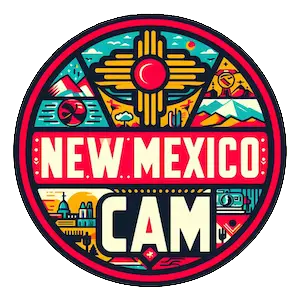Ancient Beginnings
The area around present-day Farmington has been inhabited for over 2,000 years, initially by the Ancestral Puebloans. These ancient people built elaborate communities, including the well-known site of Salmon Ruins, located just a few miles from Farmington. These ruins offer a glimpse into the sophisticated society that once thrived in the region, with intricate masonry structures and an extensive trade network.
Around the 13th century, the Ancestral Puebloans mysteriously abandoned their settlements, likely due to a combination of environmental changes and social factors. They were succeeded by the Navajo and Ute tribes, who continued to utilize the region for its abundant natural resources.
Spanish Exploration and Mexican Period
The arrival of the Spanish in the 16th century marked a new era for the region. Spanish explorers, including Juan de Oñate, ventured into the area in search of new lands and resources. While they did not establish permanent settlements in the immediate Farmington area, their presence introduced European influences and began a period of significant cultural exchange.
Following Mexico’s independence from Spain in 1821, the area became part of Mexican territory. The Mexican period was characterized by continued interaction between Native American tribes and Mexican settlers, who engaged in trade and cultural exchanges.
American Settlement and Growth
The mid-19th century brought significant changes with the conclusion of the Mexican-American War in 1848, which resulted in the Treaty of Guadalupe Hidalgo. This treaty ceded much of the Southwest, including present-day New Mexico, to the United States. American settlers began to arrive in greater numbers, drawn by the promise of fertile land and economic opportunities.
Farmington was officially founded in 1876, named after Farmington, Michigan, by one of its early settlers, William F. Burns. The new settlement quickly grew as a farming and ranching community, capitalizing on the rich soil and favorable climate of the San Juan River Valley. The completion of the Denver and Rio Grande Western Railroad in 1905 further spurred growth, facilitating the transportation of agricultural products and opening new markets.
The Oil Boom and Industrialization
The discovery of oil and natural gas in the early 20th century transformed Farmington into an industrial hub. The first significant oil strike occurred in 1921, leading to a boom that brought wealth and an influx of workers to the area. This period saw the development of infrastructure and a diversification of the local economy, which previously had been dominated by agriculture.
The energy sector continued to play a crucial role in Farmington’s economy throughout the 20th century. The region became known for its vast reserves of fossil fuels, attracting major energy companies and leading to the establishment of numerous drilling and extraction operations.
Cultural and Demographic Changes
Throughout its history, Farmington has been a melting pot of cultures. The early interactions between Native American tribes, Spanish explorers, and Mexican settlers laid the groundwork for a diverse cultural heritage. The 20th century saw further demographic shifts, particularly with the influx of workers during the oil boom.
The city’s population has grown steadily over the years, with significant increases following each economic boom. This growth has brought a mix of cultures and traditions, enriching the social fabric of Farmington. Today, the city celebrates its diverse heritage through various cultural festivals and events, reflecting the contributions of Native American, Hispanic, and Anglo communities.
Modern-Day Farmington
Today, Farmington is a thriving city with a population of over 45,000 residents. It serves as the economic and cultural hub of the Four Corners region, which includes parts of New Mexico, Arizona, Utah, and Colorado. The city has a well-developed infrastructure, with modern amenities and services that cater to both residents and visitors.
The economy of Farmington is still heavily influenced by the energy sector, particularly oil and natural gas extraction. However, the city has also diversified its economic base in recent years, with growth in retail, healthcare, education, and tourism. The presence of the San Juan College, a prominent community college, has bolstered educational opportunities and contributed to workforce development.
Tourism plays a significant role in Farmington’s economy, with numerous attractions drawing visitors from across the country. The nearby Navajo Lake State Park, the Salmon Ruins, and the scenic landscapes of the Four Corners region offer recreational opportunities and a glimpse into the area’s rich history.
Challenges and Opportunities
Like many communities, Farmington faces its share of challenges. The fluctuating fortunes of the energy industry can lead to economic instability, and there are ongoing efforts to diversify the local economy further. Environmental concerns, particularly related to energy extraction, also pose challenges that the city continues to address.
However, Farmington also has numerous opportunities for growth and development. The city’s strategic location at the crossroads of major highways and its proximity to significant natural attractions make it an ideal destination for tourists. Efforts to promote sustainable development and renewable energy sources are gaining momentum, potentially paving the way for a more resilient and diversified economy.
Conclusion
The history of Farmington, New Mexico, is a testament to the resilience and adaptability of its people. From its ancient roots as a center of Ancestral Puebloan civilization to its emergence as a modern industrial and cultural hub, Farmington has continually evolved to meet the changing needs and opportunities of its inhabitants. As the city looks to the future, it carries forward a rich legacy of cultural diversity, economic innovation, and community spirit, ensuring that Farmington will remain a vital and dynamic part of the American Southwest for generations to come.
